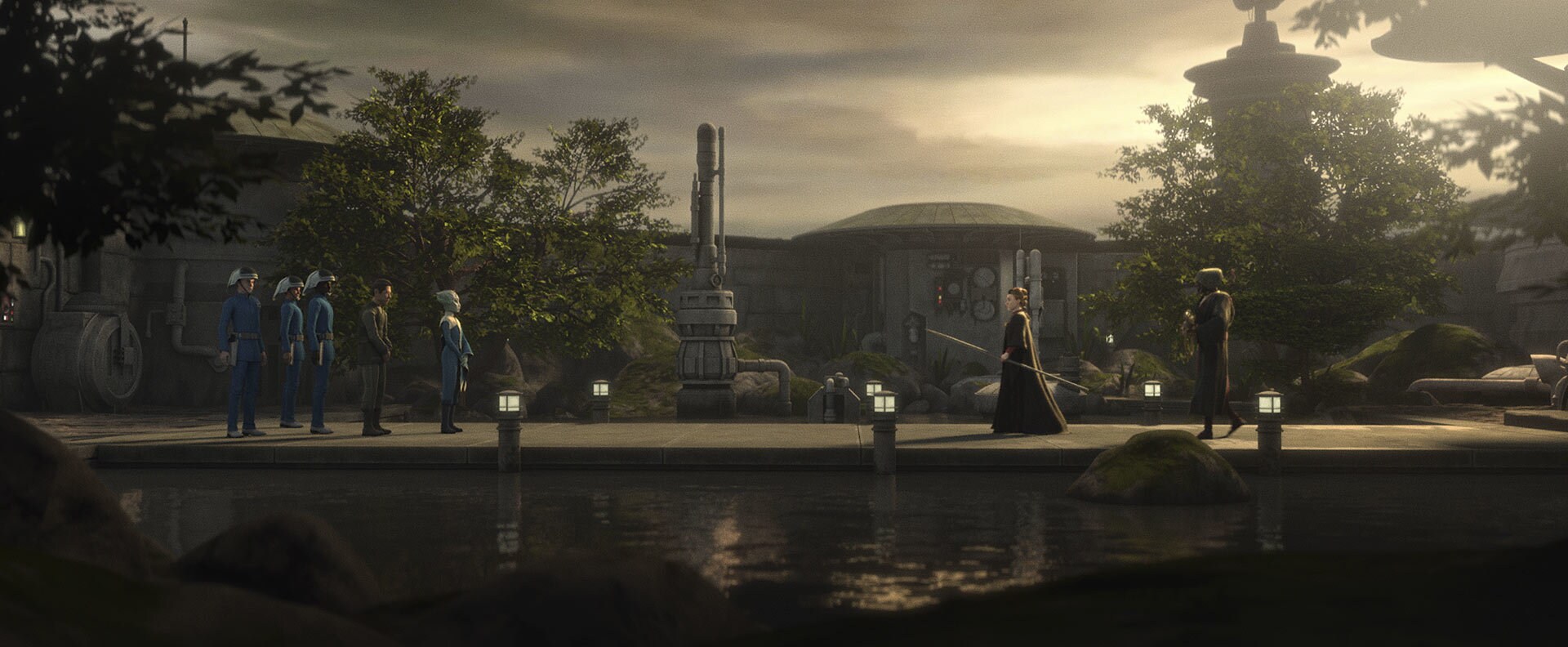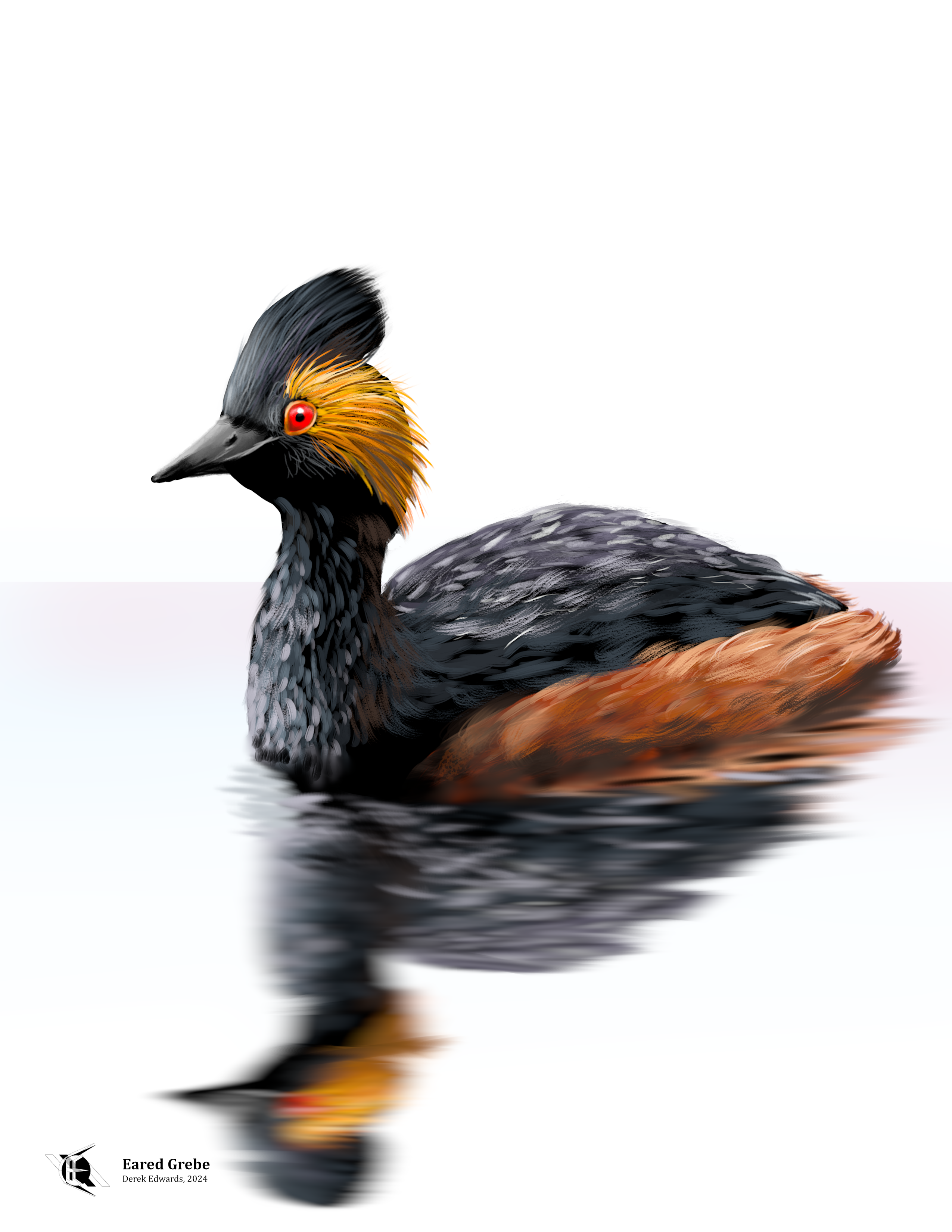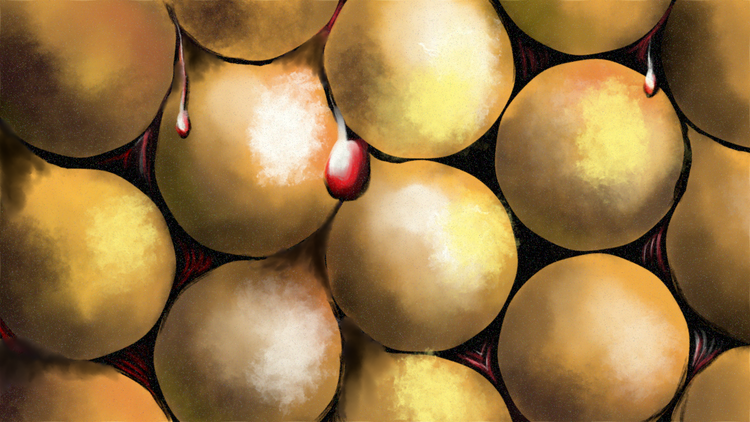
Running Commentary 5/6/2024
Hello,
Songbird migration is at peak this week, so keep an eye out for visitors. The orioles have arrived at my jelly feeder, and rose-breasted grosbeaks have made their annual appearance at the seed feeder before retreating to the treetops for the summer.
Anyway...
Watching...

The Bad Batch
- The series finale was solid, but it was an incredibly straightforward ending. Things played out roughly how I expected they would going in from episode 14, although I had expected Echo to die and for Rex to show up, neither of which happened. But there's still no real twist at the end here, which is fine, but I think it might have worked better to have released the last two episodes at once.
- The Zillo beast basically does all the work, wrecking the base, breaching security to let the Batch inside, and drawing away the Empire's soldiers. I half-expected it to arrive and eat Hemlock off the platform in the end, but no. It seemed to not want to be in the show and left as quickly as it could.
- There were...fewer imprisoned clones than I thought there were, or at least we saw fewer than I thought we'd see. Obviously, the entire clone army wasn't in Tantiss, but we only saw a few dozen troopers, most of whom didn't make it out alive. Were the rest dead already? Maybe. For something that was such a big part of the show, it's odd to see the fate of the Clone Army sort of glossed over in the finale.
- The teased squad of CX troopers were much less interesting than I thought they'd be. I had figured Hemlock had cloned his own Bad Batch, but that doesn't seem exactly true. They were cool enemies, but they were introduced a bit late to become a real part of the show in the end.
- I'll be writing a review of the full series–all three seasons + the arc of Clone Wars where they were introduced–but for now I'll say this about Season 3: it was focused, for good and bad. We didn't get much extraneous work-for-hire missions, which had sapped the momentum of previous seasons, btu we also didn't get nearly the look at the wider Galaxy that we got in previous seasons either. Particularly, the ultimate fate of the clones went unresolved. But the fate of the Batch was nicely told here, and that's what the show was meant to be about. I enjoyed the season.
- As for what's next? The final scene seemed to be teasing a Rebel pilots-centered show, perhaps, and we know Ventress is back and we'll be getting some sort of story about her. Wolfe showed up and we know there's more story there. Emerie's planning to bring word of Project Necromancer to proto-Rebels in the Senate. We don't have an announcement of what the next Star Wars animated series will be, but there are several opportunities coming from this show alone. We'll just have to wait and see.

Tales of the Empire
I'll be giving this a full review soon, as I did for Tales of the Jedi. For now, here are my initial thoughts on the first three episodes (second three will be next week):
- First off, thank you for putting all three Morgan Elsbeth episodes together, then all three Barriss Offee episodes together. The Ahsoka-Dooku-Dooku-Dooku-Ahsoka-Ahsoka pattern of Tales of the Jedi was a weird mistake and I'm glad it wasn't repeated here.
- The first three episodes, about Morgan Elsbeth, were pretty good. Elsbeth is not a character that I'm particularly fascinated by, but I liked the shorts well enough. Actually, I mostly liked the first two; the third one was a lot less interesting, only serving as prelude to Ahsoka's cameo appearance in The Mandalorian. But the first two were a good look at the character's origins. If, in Tales of the Jedi, Dooku's story was a bit too little of a look at an underexplored character, and Ahsoka's were extraneous looks at a well-explored character, Elsbeth's story here is just enough to fill in the blanks about a key but minor characters.
- The canonization of the Singing Mountain Clan of Dathomir witches is an interesting move. I wonder if we'll see more of them in the upcoming Thrawn stories, given his involvement with Dathomir.

Bird of the Week
One of the odd quirks of birders is that we like violent storms. Or, at least, we find the silver lining in a massive wall of dark clouds. Storms, you see, move birds. They pick up and carry winged creatures, sometimes for great distances. New England birders will know to go out after a nor'easter to look for European species swept across the Atlantic, and Europeans likewise know to look for American birds if a hurricane turns the right way.1 Hurricanes can also drive Gulf Coast birds up into northern states.2 This phenomenon is known as drift,3 and it's a matter of study among those who track bird movements.4 For birders, drift is less a mystery and more of an opportunity. For instance, recently a huge storm front came west-to-east through the Great Lakes region, and in the weeks since, several birds from western states started popping up, including today's bird, which I saw in artificial lakes in Muskegon County: the Eared Grebe.
There are three subspecies of eared grebe, each one living in a distinct part of the world: the nominate race is found in Eurasia, where it is generally called the black-necked grebe (not needing, there, to be differentiated from the similar-looking horned grebe); Gurney's black-necked grebe is found in southern Africa and the Great Rift Valley, where it is resident rather than migratory; and the "californus" subspecies is found in much of western North America. This species is the most numerous of all grebes, with a roughly estimated 4,000,000+ individuals alive in the world,5 the vast majority of those being North American.
Eared grebes in North America breed in marshes and ponds in the northern Great Plains, including the Canadian prairies. Soon after the nesting season, however, they move to the hypersaline lakes of the Great Basin, where they (like the grebes' closest cousins, the flamingos) gather in great numbers to feed on brine shrimp. While there, they molt and take on their non-breeding plumage; they lose their golden "ears" and chestnut sides, becoming gray with white cheeks. In December they travel down to the Gulf of California, mostly, for the winter. Unlike the pied-billed grebe common to Michigan, the eared grebe eats aquatic arthropods, not fish, and even avoids swimming in the same water as fish.
Those hypersaline lakes, most especially the Great Salt Lake and Mono Lake, are home to almost the entire North American population of eared grebe during the autumn months. Mono Lake, which sits in California between Yosemite National Park and the Nevada border, is presently protected by a legally mandated water level, which it is still well below after decades of being drained to supply water to Los Angeles and other cites.6 The grebes cannot fly when they're molting, so if a lake isn't as suitable as they anticipate, they can't leave. Saline lakes are thus closely monitored by state agencies and conservation groups. The grebes are not an officially threatened species, but their heavy dependance on a few key bodies of water leaves them vulnerable.7
To science, the bird is Podiceps nigricollis. The genus name, you may remember from the time I featured P. cristatus, the great crested grebe, means "vent-footed", a reference to the extreme-rear placement of their legs. "Nigricollis" simply means "black-necked" in Latin.8 Despite being found in Europe, it was overlooked by Linnaeus and first formally described in 1831, by Christian Ludwig Brehm, a German clergyman known as a major figure in the history of European birding, in his Handbook of Natural History for All Birds in Germany.
And hey! I recorded myself drawing this, so now you'll get my secret to drawing reflections. Grebes are remarkably easy to draw; the whole thing took under 2 hours. At 3x speed this video runs about 17 minutes. Enjoy!
- Weston, Phoebe. “‘In Total Shock’: Birdwatchers Amazed as ‘Uber-rare’ American Birds Land in UK.” The Guardian, September 26, 2023. https://www.theguardian.com/environment/2023/sep/25/canada-warbler-magnolia-uber-rare-american-birds-land-in-uk-aoe.
- Illiff, Marshall. “How Hurricanes Affect Rare Bird Movements.” All About Birds, October 15, 2011. https://www.allaboutbirds.org/news/how-hurricanes-affect-rare-bird-movements/.
- Gregg, Jason. “How Bird Researchers Are Tracking the Impacts of Intensifying Hurricane Seasons.” Audubon, February 21, 2023. https://www.audubon.org/news/how-bird-researchers-are-tracking-impacts-intensifying-hurricane-seasons.
- Lund, Nick. “Why Are Rare Birds Coming to Maine?” Maine Audubon, December 18, 2018. https://maineaudubon.org/news/why-are-rare-birds-coming-to-maine/.
- BirdLife International (BirdLife International). “IUCN Red List of Threatened Species: Podiceps Nigricollis.” IUCN Red List of Threatened Species, August 7, 2018. https://www.iucnredlist.org/species/22696610/132584321.
- Sundstrom, Bob. “Mono Lake - Seeking a Balance.” BirdNote. February 4, 2022. https://www.birdnote.org/listen/shows/mono-lake-seeking-balance.
- Tavernia, Brian. “Dependence on Threatened Saline Lakes Leaves Eared Grebes at Risk.” Audubon, February 21, 2023. https://www.audubon.org/news/dependence-threatened-saline-lakes-leaves-eared-grebes-risk.
- Jobling, J. A. (editor). The Key to Scientific Names in Birds of the World (S. M. Billerman et al. editors), Cornell Laboratory of Ornithology, Ithaca.
Curation Links
Inside the world of instruction manuals | Helene Schumacher, BBC
“While we may think of them as the dense paper booklets that fall out in a tumble of bubblewrap and polystyrene when we are unpacking our new bedside cabinet, instruction manuals are much more. They exist for a multitude of purposes and take many different forms. What’s more, they are not an especially modern invention: they have, in fact, been around for at least two centuries.”
I made a ball seeking hoop | Stuff Made Here
[VIDEO] Documentation of the design and build of a basketball hoop and backboard mounted to a six-degree-of-freedom rig able to move it to catch a basketball thrown anywhere in a large room. (26 minutes)
Learning to live with musk oxen | Megan Gannon, High Country News
The struggles faced by residents of Nome, Alaska, in the face of reintroduced musk oxen in the Seward Peninsula. Creatures something like small cows take the town over in the summer, goring pets and, thus far, one person to death when disturbed, all while being themselves protected by state and federal conservation agencies that locals feel aren’t equipped to make decisions about what gets to live near their homes.
On Killing A Pigeon in New York City | Vincent Toletino, Electric Literature
[FICTION] “On the third step down, in the shadow of the wrought-iron handrail, a small huddled form sat motionless. I hadn’t seen anything there on my way up, an hour ago. Maybe I had missed it. We went closer, speaking gently: hey little one, are you okay? It didn’t move. Its head hung low, near the step. Its crown and throat were snowy white, with dark gray regions around its eyes. Its eyes were wide and black and blank, like the eyes of someone shocked.”
See the full archive of curations on Notion






Member Commentary